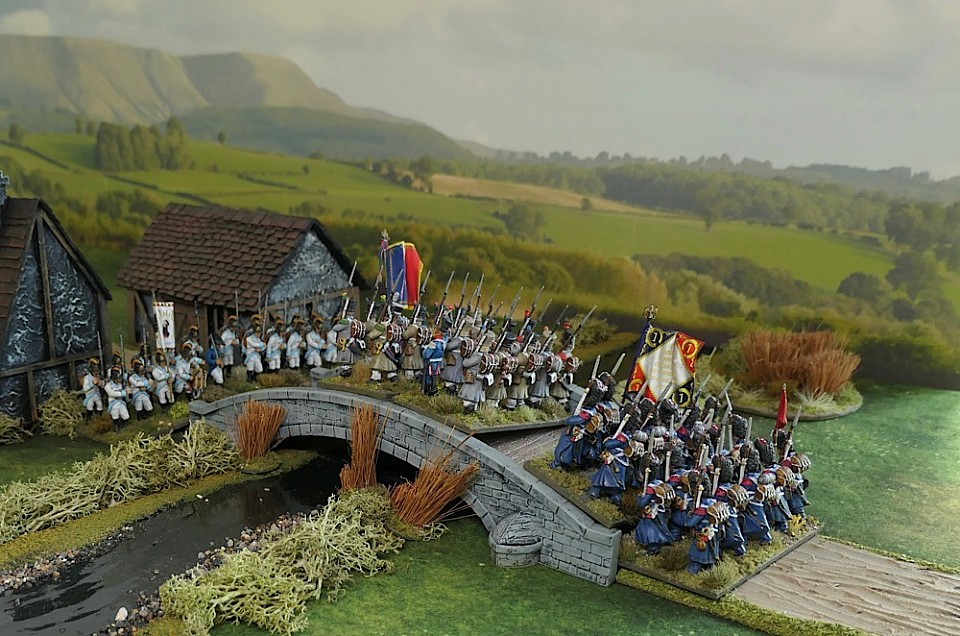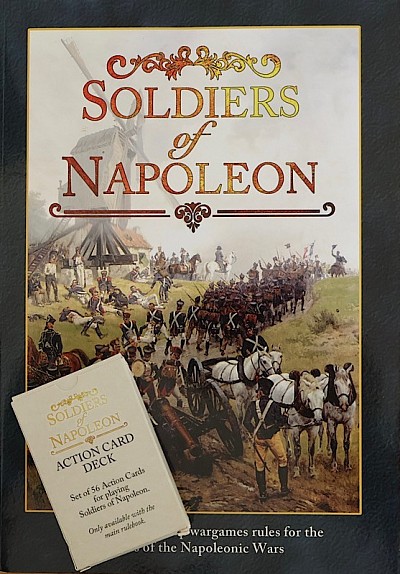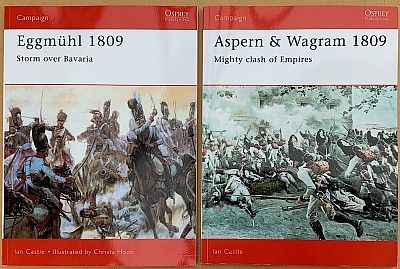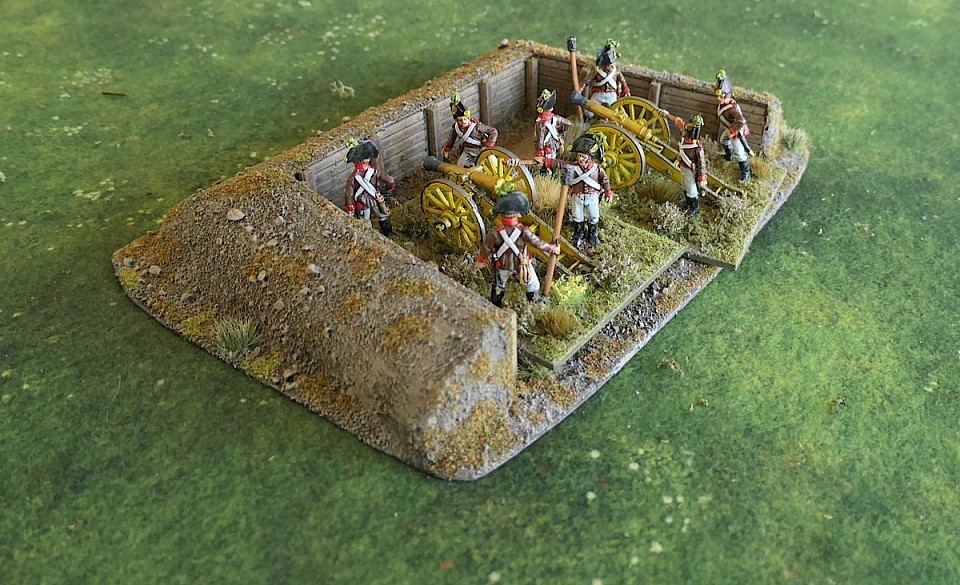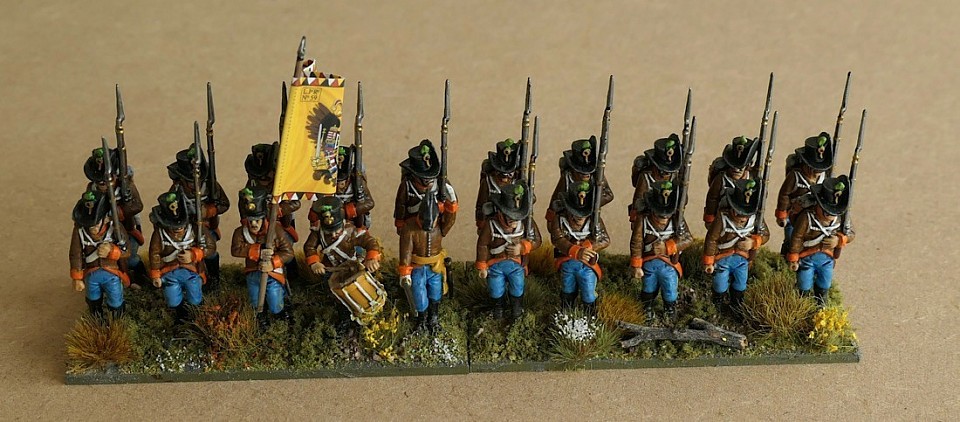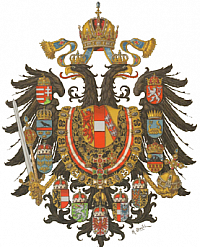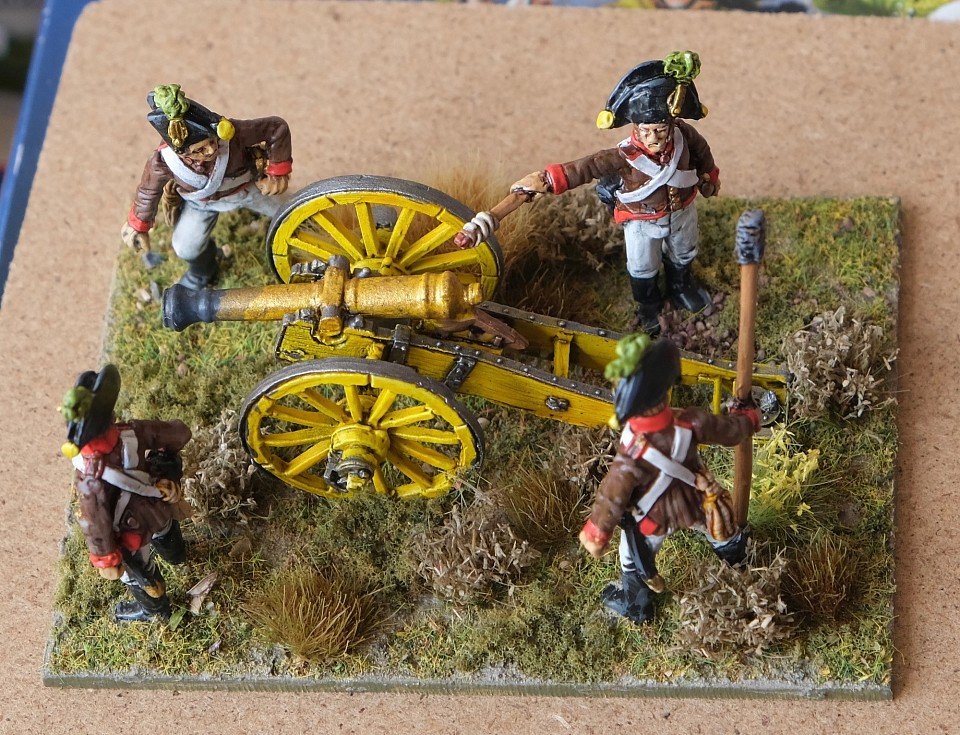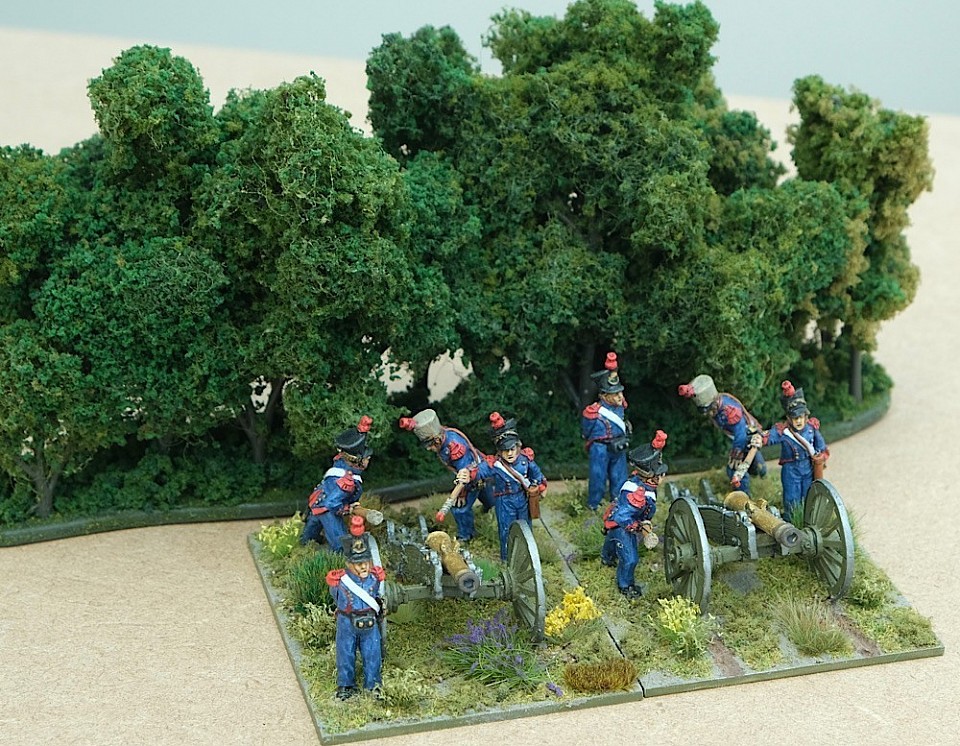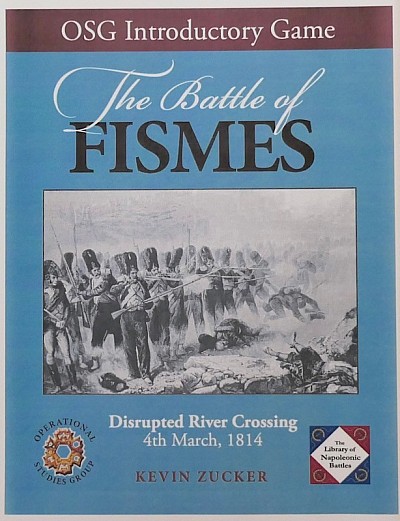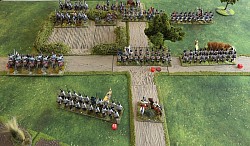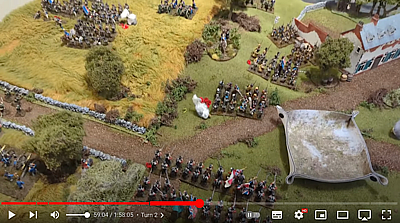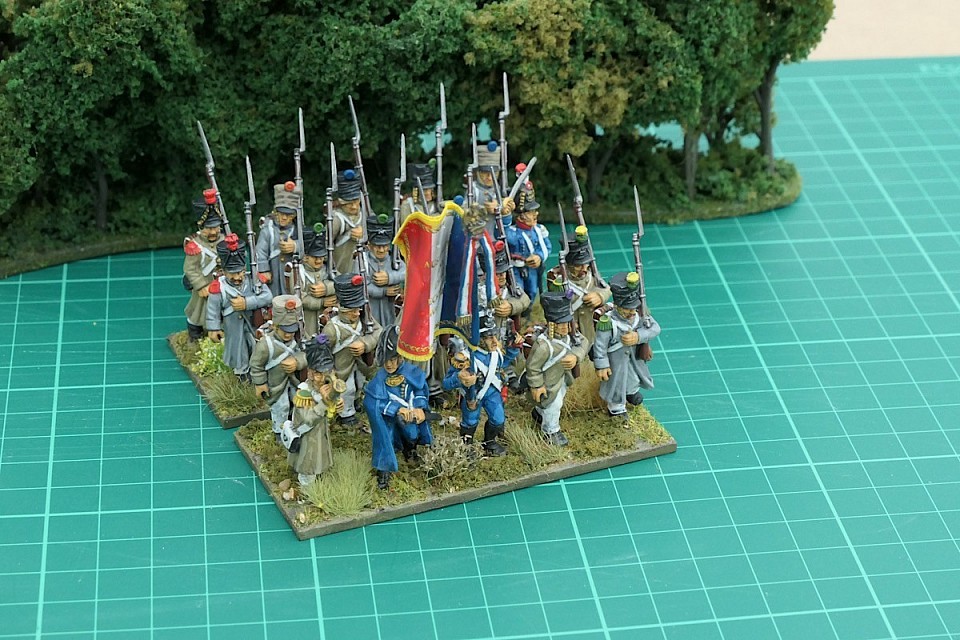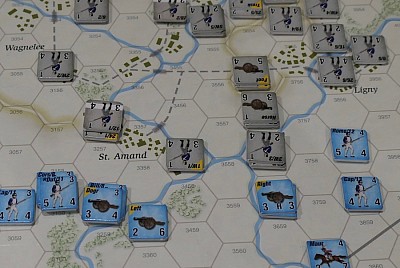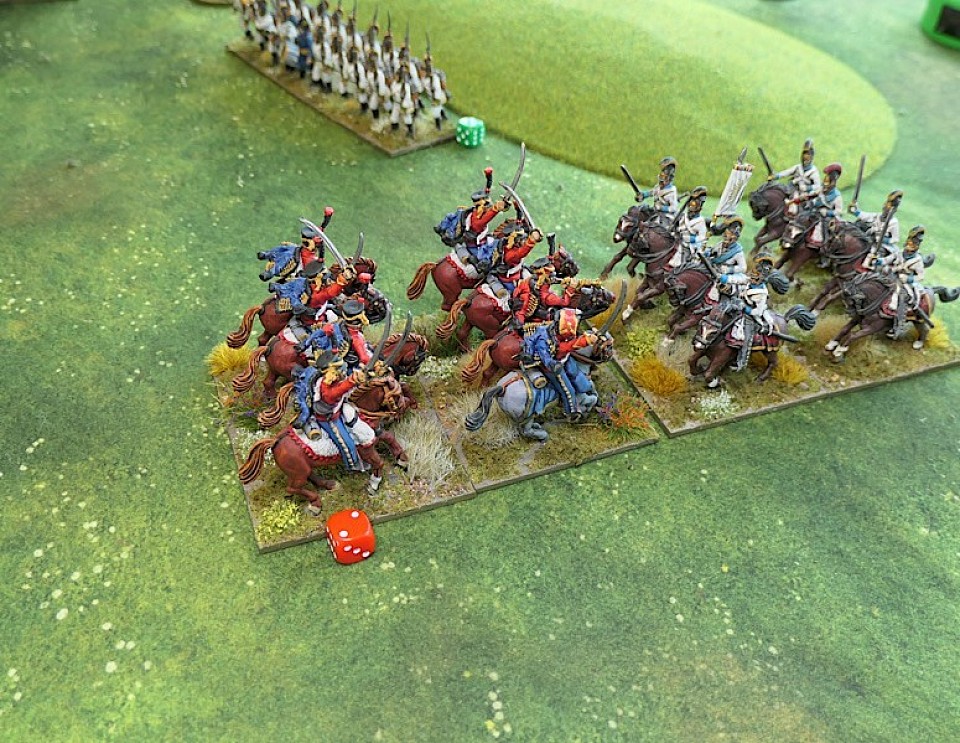Napoleonic 1808 - 1815
Soldier's of Napoleon
Through the post box today, A Napoleonic ruleset - Soldiers of Napoleon.
This has been out for a while and though I have been interested, the fact of it being card driven, has always made this seem not the game for me ..... however;
I have been watching a few videos, particularly the one by Wargames Illustrated Magazine, where they interview and game with the author and my interest had been tickled enough to put an order in.
Two headline aspects are 1. Your battle with 2 - 5 brigades on a side is actually sitting within a larger engagement and things that are happening off table (i.e. to your flanks) may come to influence your game - the cards bring some of this narrative.
2. The cards are used rather like those in the boardgame 'Commands and Colors' - each card has a value for orders that can be given to a brigade for its various battalions to act OR it can be played for its special event (such as - Fierce Cavalry Charge) OR it can be played for its rally value.
So far, those who I have come across in reviews seem only to have good things to say about it all and I think part of that may be because the system offers something different, plus narrative type rules are becoming increasingly popular.
Anyway, we shall see. The company (Gripping Beast) have two download campaigns that could be used with my French / Austrian pairing, one for Wagram and the other for Austerlitz, so they are on the list.
In the meantime the rules do include stats for the Austrians in the War of the 6th Coalition, so I will do a bit of practising in that setting for now - hopefully I will like the rules. there is a bit of reading and a learning curve to go through, but my enthusiasm is high.
introducing 1809
Good old Osprey! Between these two books, they should give me a good feel for the 1809 campaign and the illustrations and photographs that are typical of Osprey publications, should help with some scenario building.
EDIT Marengo and Austerlitz also from Osprey are joining these two titles.
Superb on line resource
Someone at The Lead Adventure Forum posted a link to this amazing PDF resource.
The Austrian Imperial-Royal army 1805 to 1809, by Enrico Acerbi, is a 198 page book covering uniform plates, facings and orders-of-battle, together with information on reform and organisation etc.
Battle of Fismes is an introductory title to 'The Library of Napoleonic Battles' series.
I have just played through it and pposted some observational notes over on the Battlefields & warrior Blog, from the perspective of how useful the intro scenario is to a new player.
LINK
https://battlefieldswarriors.blogspot.com/2025/04/the-battle-of-fismes-introduction-to.html
The Fighting for Quatre Bras and Ligny
Today is the 210th anniversary of the start of three days of fighting that defined the Waterloo campaign of 1815.
On this day, the first two battles, Quatre Bras and Ligny were fought. The two battlefields were just 6 miles apart.
Using the boardgame ‘Napoleon’s Last Gamble’ designed by Kevin Zucher and published by Operational Studies Group, I am marking that anniversary with a post covering the action of those two battles.
The two battles are played on a single map and I have recorded the events of the hourly turns of the battle as the game unfolded to tell the story of the 16th June.
It is a lengthy post with supporting photographs, so I have posted it over on the Battlefields & Warriors Blog rather than here. I hope it adequately entertains.
LINK;
https://battlefieldswarriors.blogspot.com/2025/06/anniversary-battle-of-quatre-bras-and.html
A painting guide for Prussians
Rather an interesting and helpful guide to Prussian uniforms and tactics.
LINK
Soldiers of Napoleon
I don’t often watch lengthy YouTube videos from start to end, but I thought that this was particularly well done.
(link at the bottom of this post).
Martin and Robin from the 7th Son Channel present their ‘learning’ game of Soldiers of Napoleon by Warwick Kinrade. When I say learning, it is fact a well presented game with the duo already having a good grasp of the rules and by the end of video, you will have a good understanding of the mechanics and will certainly help with a buying decision.
It is really helped along by a splendid looking table that helps convince that a good game with 28mm can be played off the domestic table.
At my last two or three wargame shows, I have picked these up - put them down - picked them up - put them down, totally undecided whether to buy. This video has really helped me.
Some headline features are that;
The rules use paces for measurement and so are scale agnostic.
A hand of specialised cards are used to progress the turn. Each card has three features. You can play it on a brigade commander to give a number of units orders, the cards have random order values. You can play it for the Special Event, for example the card might give you a round of enhanced cannonade to use all of your guns and you can play it for function such as Rally.
The system assumes that you are playing a small section of a bigger battle and so things are going on around you ‘off-table’ and some of those things may influence your game, so for example in their game, nearby British guns got a chance to target one of the on table French units. Success and failure on your ‘off board’ flanks might also influence your game.
In the video, each side has a small division of three brigades, which is the size of game I particularly favour.
The game is underpinned by Victory Points, which are earned throughout play from various situations, once a player scores enough VP’s to match the other side’s Morale Value, they win.
With a battle that potentially fills the table, the cards do help shake things up a bit to keep play flowing and interesting and so playing exactly the same game twice has the potential to play out differently each time.
I am not a huge fan of cards, especially those system that allow play of cards against the other person in a sort of ‘Gotcha’ style, with the card having no intelligent relevance to what is happening on the table. Here, the cards are tamer and have two functions sitting side by side.
One is to drive the command system and the other is to introduce special events to help the narrative, though it is interesting to note in one of the comments at the foot of the video, the poster says something along the lines of - you end up playing card play rather than playing a game of Napoleonics., an interesting observation that I don’t fully concur with, but they have a point.
The sticking point for me on cards is that it undermines solo play. It looks to still be playable solo judging by the cards that I saw drawn, but the hassle of managing two decks when gaming alone is something that I don’t mind passing on. Overall for me and my solo game, it is a solution to a problem that I don’t have, but for others, I can see it giving interesting games and bringing a strong narrative.
It would be the Austrians that interest me and their stats etc are in a second book and I must admit, I don’t like being pulled down the codex / supplement route. I will still carry on picking it up and putting it down at wargame shows though :-)
LINK
A focus on St. Amand
This is the game map for the Ligny battle, part of the 'Last Battles of Napoleon' quad. This version was published in 2015 by Decision Games.
The shot shows a close-up of two important villages, the main one is Ligny (top right), but of interest to us is St. Amand (bottom left), simply because I am working on a figures scenario for this area of battle.
It will have three linked scenarios, each covering the same ground. The idea is that anyone just getting into the period can game a slimmed down version of the scenario and then as their collection grows the 2nd and 3rd part can be added - same battle, just an escalation of forces involved.
